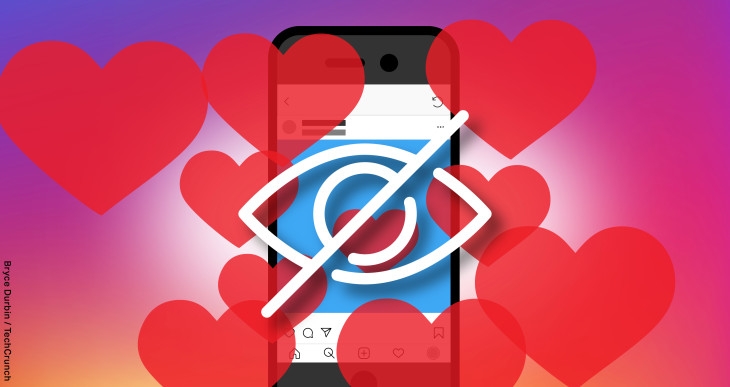Why Traditional Engagement Metrics Are No Longer Enough
Use metrics that actually predict behavior

For years, advancement directors have spent the bulk of their time measuring engagement as “likes” on major social media platforms. These traditional engagement metrics have the advantage of “meeting people where they are” (i.e. online, and on social media platforms).
While pushing content on traditional social media platforms can help a university boost engagement, brand image, and event attendance, traditional engagement metrics don’t provide the information that advancement professionals care about most. Advancement professionals are not merely interested in knowing who has donated, how much, and when. To build donor relationships, they also need to know why they donated, who influenced them to donate, and what influenced them to donate. Surface-level engagement metrics don’t provide that level of insight.
For this reason, the practice of counting “likes” or views as primary engagement metrics has proven to be incredibly ineffective in predicting consumer behavior. In an industry that depends on consumers engaging with content at a level meaningful enough to inspire philanthropic donations, this is a major flaw in the system. If university officials want to fully understand their alumni network, predict giving trends, and increase giving, they need to find engagement metrics that measure far more than a simple “like.”

What are we counting?
The major appeal of using traditional engagement metrics such “likes” and views is that they are easy to measure. However, just because something is easy to measure doesn’t necessarily mean it is meaningful. Surface-level engagement metrics don't teach you anything about the people who are counted. According to CASE, these metrics fall “completely short of demonstrating what actions a college or university might take to increase engagement among alumni who are less connected.”
Measuring the number of likes on pages and posts from Facebook, Twitter, Instagram, and so forth creates a mass of data that can be mapped and analyzed through statistics. But what are these “likes” really worth?
The Harvard Business School conducted multiple studies with 18,000 participants, aiming to explore this issue further and see whether the true engagement can be quantified with these long-held methods. In one of the experiments, half of the study group was given a link to “like” a particular Facebook page, while the other half did not receive the link. Researchers then distributed a coupon for a free sample to everyone in the study in order to see if those who had liked the Facebook page would be more likely to accept the free sample.
The result? No link between Facebook likes and sample consumption. Several similar studies were also conducted — testing, among other factors, the effect that a friend liking a page could have on consumer actions. In the end, all of the studies failed to yield results proving that “likes” cause (or correlate with) consumer behavior.
What we can learn from these results is that reach does not equal value. In fact, “often, a small-but-engaged audience is more valuable than a large-but-passive audience.” This is because the true value lies in engagement, not in the number of “likes.” Since “likes” and engagement do not demonstrate any sort of causal relationship, alumni relations and advancement professionals must begin using more relevant engagement metrics.
In Defense of the Small & Mighty
Let’s examine the number of Facebook page likes for two different organizations — Coca Cola and Humans of New York. As of August 2019, Coca Cola had 107,338,216 likes, while Humans of New York only had 18,122,825. Coca Cola had almost 6 times more likes, but the page for Humans of New York had far greater measures of engagement, such as long, well-thought-out comments on their posts and shares to other pages.
So, what’s the difference between these accounts?
The crux of the issue is content. Humans of New York post meaningful, personal stories from real people living in a large city. The photographer for the page is a professional who conveys deep emotional resonance through photos. The measures of long comments and shares reflect the fact that consumers are being emotionally affected by the content.
By contrast, Coca Cola shares branded content and images that are meant to make people buy something rather than connect with something. Their number of likes per post, as well as their number of shares and long comments, lags far behind that of the Humans of New York page.

Instagram’s Leap Away From Traditional Engagement Metrics
Even Instagram, a social media behemoth founded on a likes-focused interface, is considering abandoning traditional engagement metrics. They’ve been testing a new model of the application in Canada that omits like counts from users’ newsfeeds so that the total number of likes is only visible to the person who posted the image. Executives made this decision because they know that allowing users to compare their number of “likes” to the amount their friends receive causes people to remove photos from their page.
Furthermore, mental health problems have been associated with the metric, with overall well-being often shown to diminish. While the specific reasons for removing “likes” from the platform can’t be extrapolated to the metric’s use in advancement practices, it boils down to the same core concept — likes don’t mean much, so we shouldn’t put so much emphasis on these shallow engagement metrics.
Beyond the Tip of the Engagement Iceberg
As we look to the future of advancement, university officials must find a new way to measure the engagement and keep up with an ever-evolving digital world. Engagement metrics such as “likes,” donation history, event attendance, and volunteering lend themselves to easy data collection but offer only basic insight into alumni engagement.
In the end, “likes” are just the tip of the engagement iceberg. They help advancement professionals understand what an alum does, but not why they do it.
Meaningful alumni engagement needs to reflect the individual qualities and differences among alumni. After all, an alumni network is comprised of many tens of thousands of individuals, each with their own experiences, memories, and emotional connections to their alma mater. Alumni range in age from the early twenties to the late nineties and are at vastly different stages in their professional and personal lives.
A “one-size-fits-all” Facebook model is good for mass communication, but poor for personalized engagement. The implementation of such a model results in the vast majority of content being viewed as irrelevant at best, or spam at worst.
Furthermore, personalized experiences, à la Netflix and Amazon, are not only appreciated but expected today. A modern social engagement platform should enable a college to actively shape its content, eliciting specific insights into the affinities, experiences, memories, and personal connections that are meaningful to each alum.
Mass personalization enables a college to provide a more relevant and meaningful engagement experience to each individual alum. It also leads to a much richer set of data on the emotional connections that bind alumni to your university, such as the influence that a particular professor had on an alum, how your university impacted the alum’s career, or which experiences and people shaped their alumni identity.
Deeper insights into individual alumni can be used to tailor donor cultivation strategies that will maximize giving. The ultimate goal is to develop a model that is a better predictor of giving in order to optimize advancement's Return on Effort. Traditional models that rely on shallow engagement metrics will never be as accurate as a machine learning model that utilizes a multitude of engagement metrics. Universities need a model that not only captures the interests, affinities, and emotional connections between alumni but also takes into account the comparative strengths within each of those measures.
As Walt Disney said, “progress is impossible without change.” So, move beyond “likes,” and into a more engaged future. Your university will thank you.
Stay ahead of the curve with CueBack
The world of advancement is changing. Don’t get left behind. Stay ahead of the curve with insights from forward thinkers in the industry who are paving the way for tomorrow’s advancement professional leaders.